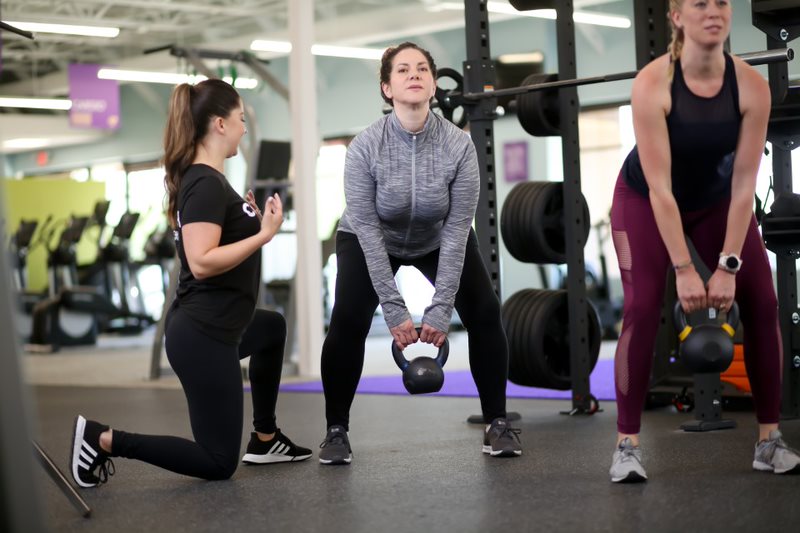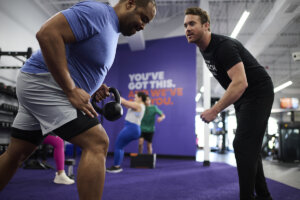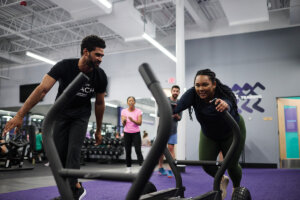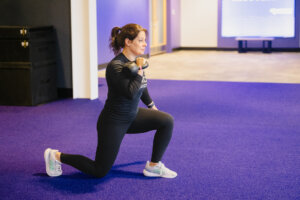The deadlift, like the squat, is one of the most foundational movements for any weight lifter, or for anyone who wants to build strength. It can also be the most intimidating and the most difficult to get right, which is why today, we’re taking a deep dive into mastering perfect deadlift form.
The deadlift is a foundational hinge movement that uses some of the largest muscles in our body. The glutes, hamstrings, core, and lower back are the main muscle groups that aid us in the hinge motion; this muscle group is commonly referred to as the posterior chain, because of how all the muscles work together. The hinge motion is common in everyday life, and as deadlifting requires the posterior chain to work in perfect harmony and with proper form, strengthening your posterior chain through deadlifting can directly impact your quality of life. Anytime you’re lifting something heavy off the ground, you’re utilizing your posterior chain, so strengthening your posterior chain makes these movements easier in everyday life. Your posterior chain muscles are also the big movers when you’re running, jumping, or walking, so training them makes them stronger and more efficient for all kinds of different moves.
Another huge benefit of mastering the deadlift is strengthening the lower back and core. As long as you are healthy and injury-free, deadlifting strengthens these muscle groups to keep your midsection stable and strong. The core is a crucial part of almost every movement we perform throughout the day, so you’ll reap the benefits of deadlifting in your everyday life.
In order to master the deadlift, we must first start with the hinge motion. To make sure you learn the hinge motion in a safe manner, we’ll work our way down the deadlift progression below, rather than jumping right into deadlifts. Our progression will start with bodyweight, then challenge your balance and mobility with single leg deadlifts, and finally lead you to mastering the classic barbell deadlift, or any other hinge movement!
The goal of this progression is to get you into a proper hinge motion without any pain. It is important to note that you should always check in with a doctor if anything feels wrong while performing these movements. Slight discomfort when pushing yourself to lift heavy can be normal, but pain is your body telling you something is wrong, so you should never ignore it! If you need help or equipment in order to complete these movements, make sure to stop by your local Anytime Fitness to chat with a coach. And lastly it should be noted that everyone has a different range of motion for the deadlift. While proper form is universal, your deadlift might look slightly different from our videos or the person next to you. Start by mastering the first exercise of this progression, then do the same with the second, all the way up until you’re finally feeling comfortable and confident with a full barbell deadlift!
1. Bodyweight Good Morning
- Stand upright with your feet about hip-width apart.
- Hinge forward at your hips, keeping your back flat and your legs slightly bent.
- Return to the upright position. Be sure to maintain a flat back throughout and keep your legs straight.
2. Bodyweight Single Leg Reach
- Stand upright with one foot off the floor, with that knee bent at 90 degrees and your arms by your sides.
- Bend forward at the waist, lowering your torso down and reaching toward the floor, keeping your standing leg mostly straight while the bent knee leg goes behind you.
- Push off the standing foot to return to the upright position. Use your core to keep your balance.
3. Barbell Good Morning
- Stand upright with a barbell on the back of your shoulders and your feet about hip-width apart.
- Bend forward at your hips, keeping your back flat and your legs straight.
- Use your core, lower back and leg muscles to return to the upright position. Be sure to maintain a flat back and straight legs throughout.
4. Dumbbell Single Leg Reach
- Stand upright holding one dumbbell (or kettlebell) by your side with your arm straight and the dumbbell side foot slightly behind the other.
- Raise the back leg straight up behind as you lower your torso and the kettlebell toward the floor.
- Keep the standing leg straight as you lower down, pushing off it to return to the upright position.
5. Barbell Deadlift
This is it — the moment you’ve been waiting for. You got this!
- Start in a squat position with the barbell on the floor, your feet hip-width apart, your head up and your hips low.
- Stand up, lifting the barbell, keeping your arms straight and your back flat.
- Lower the barbell back to the floor, pushing your hips back and down and bending your knees.



